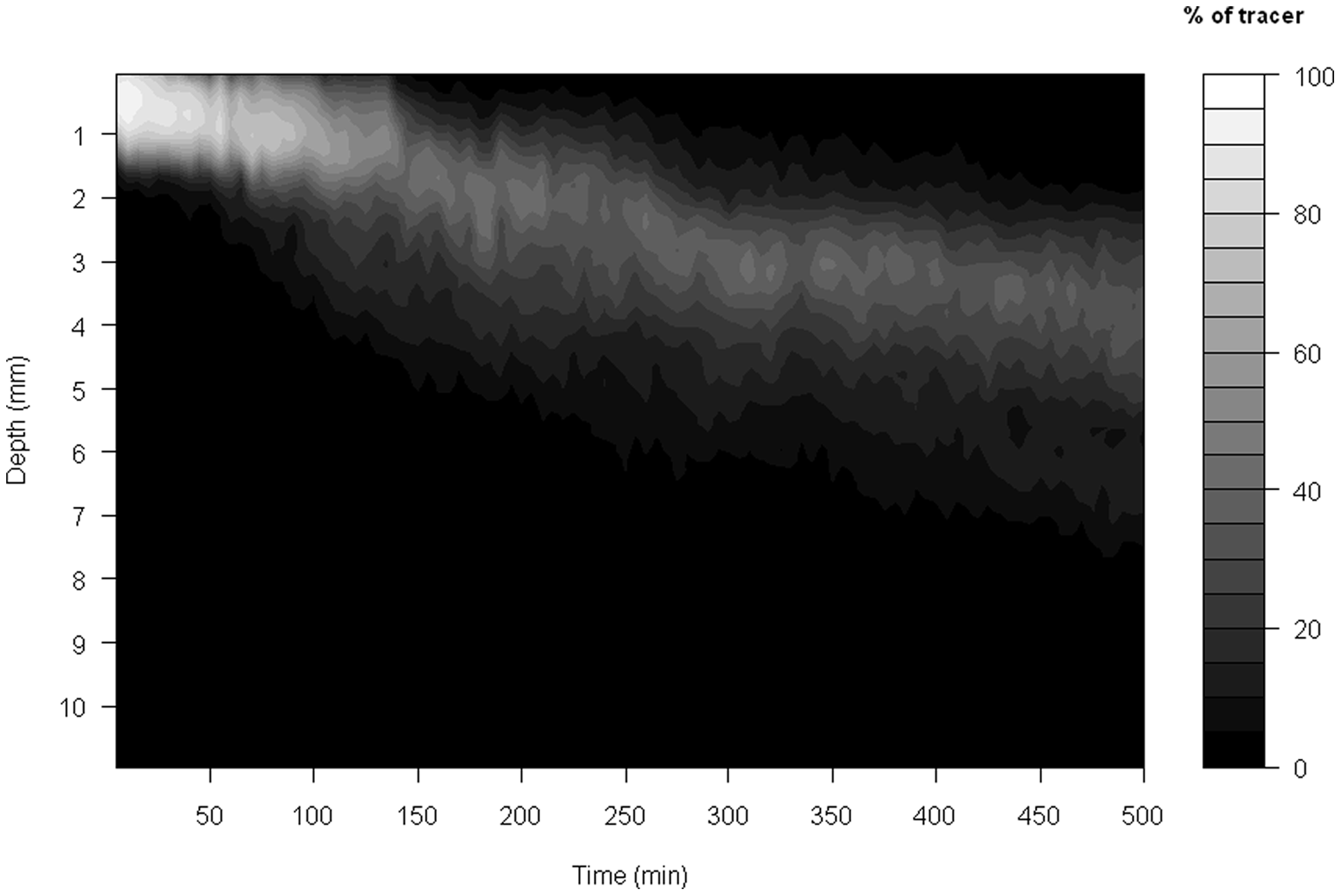An Open Source Simulation Model for Soil and Sediment Bioturbation
Bioturbation is one of the most widespread forms of ecological engineering and has significant implications for the structure and functioning of ecosystems, yet our understanding of the processes involved in biotic mixing remains incomplete. One reason is that, despite their value and utility, most mathematical models currently applied to bioturbation data tend to neglect aspects of the natural complexity of bioturbation in favour of mathematical simplicity. At the same time, the abstract nature of these approaches limits the application of such models to a limited range of users. Here, we contend that a movement towards process-based modelling can improve both the representation of the mechanistic basis of bioturbation and the intuitiveness of modelling approaches. In support of this initiative, we present an open-source modelling framework that explicitly simulates particle displacement and a worked example to facilitate application and further development. The framework combines the advantages of rule-based lattice models with the application of parameterisable probability density functions to generate mixing on the lattice. Model parameters can be fitted by experimental data and describe particle displacement at the spatial and temporal scales at which bioturbation data is routinely collected. By using the same model structure across species, but generating species-specific parameters, a generic understanding of species-specific bioturbation behaviour can be achieved. An application to a case study and comparison with a commonly used model attest the predictive power of the approach.


